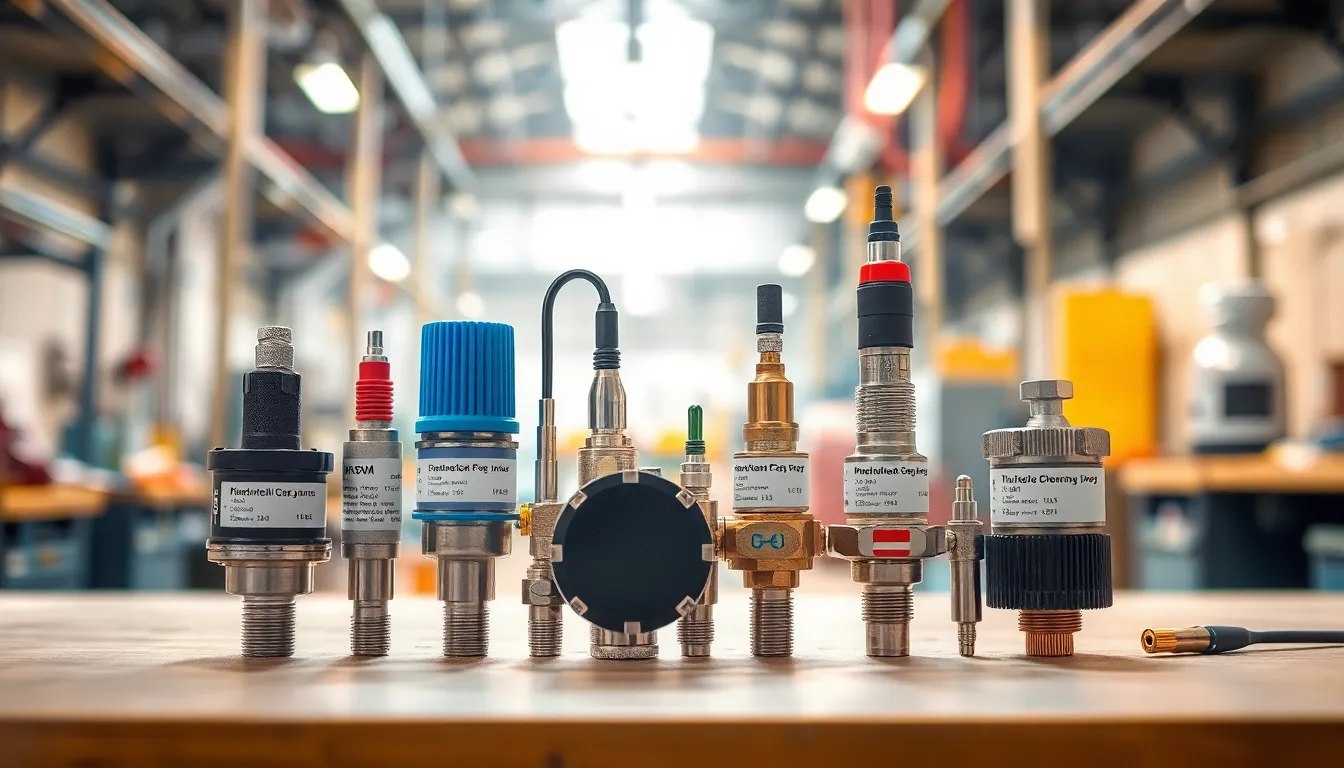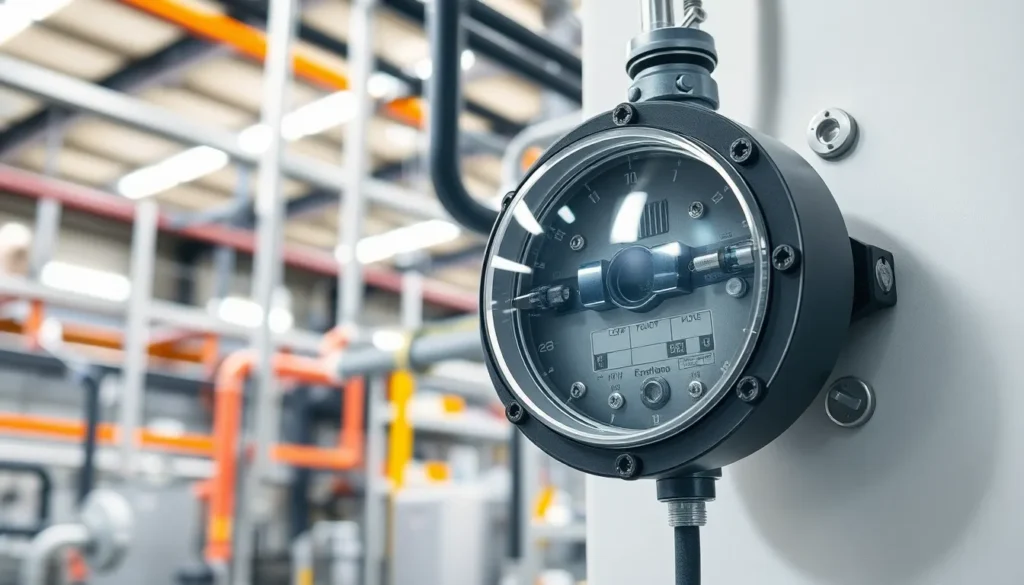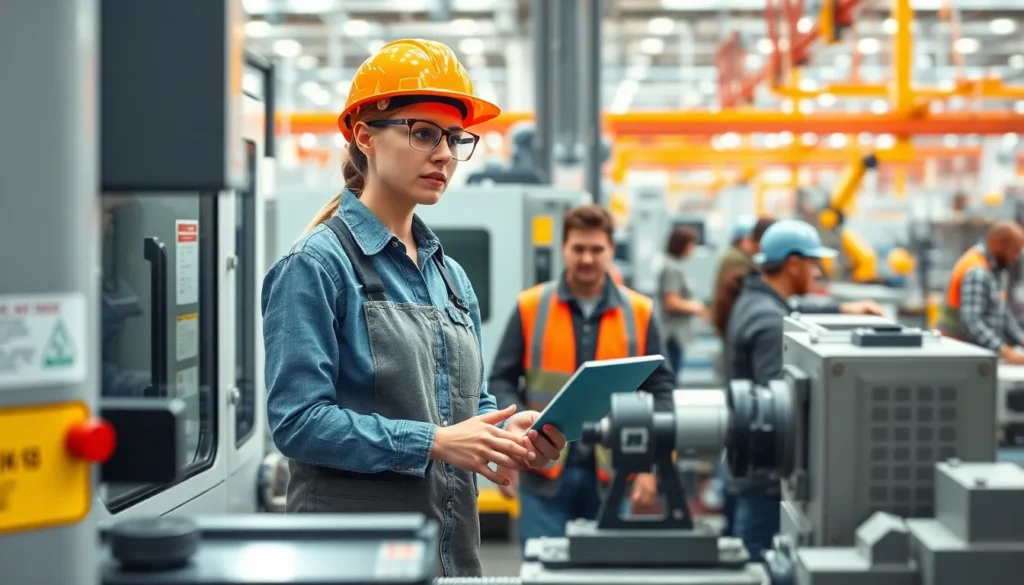In the bustling world of industry, where safety and efficiency reign supreme, industrial gas sensors are the unsung heroes. These nifty devices keep a watchful eye on the air we breathe, ensuring that harmful gases don’t crash the party. Imagine a bouncer at a club, only instead of checking IDs, it’s checking for dangerous fumes.
Industrial Gas Sensor
Industrial gas sensors play a vital role in ensuring safety within various work environments. These devices continuously monitor air quality, identifying the presence of harmful gases such as carbon monoxide, methane, and hydrogen sulfide. Businesses rely on these sensors to uphold environmental standards and protect worker health.
Typically, industrial gas sensors use technologies like electrochemical, infrared, and metal oxide semiconductors. Electrochemical sensors excel at detecting specific gases at low concentrations. Infrared sensors, on the other hand, measure gas concentrations without direct contact, making them ideal for remote monitoring. Metal oxide semiconductor sensors are known for their ability to detect a broad range of gases, providing a versatile option for diverse applications.
Sensors come in various types, including portable and fixed models. Portable gas sensors offer flexibility for workers who need to conduct inspections in different locations. Fixed gas sensors, meanwhile, are installed in designated areas for continuous monitoring and alert systems.
Effective operation of industrial gas sensors relies on calibration and maintenance. Regular calibration ensures accurate readings, while maintenance prolongs sensor life. Companies often establish schedules to ensure these devices function optimally, reducing the risk of accidents.
Data from industrial gas sensors often connects to control systems, allowing for real-time analysis and automated responses. This integration enables timely actions like ventilation activation or alarm triggering in the presence of hazardous gas levels. Investing in advanced gas sensor technology significantly enhances workplace safety and operational efficiency.
Types of Industrial Gas Sensors

Industrial gas sensors come in various types, each suited for specific monitoring needs. This diversity in technology allows for effective detection of hazardous gases across multiple environments.
Electrochemical Sensors
Electrochemical sensors operate by detecting specific gases through reactions involving electrodes and an electrolyte. These sensors excel in providing accurate readings of toxic gases like carbon monoxide and hydrogen sulfide. Manufacturers design these devices for both portable and fixed installations, ensuring versatility. Calibration occurs regularly to maintain precision in measurements. Personal safety equipment often incorporates electrochemical sensors to enhance worker protection.
Infrared Sensors
Infrared sensors utilize infrared light to identify gases based on absorption characteristics. By emitting light through air samples, these sensors can detect gases like methane and carbon dioxide effectively. They offer advantages such as low maintenance and high durability compared to other types. Many installation scenarios favor infrared sensors due to their ability to perform well in a variety of conditions. Real-time data analysis is achievable as these sensors connect seamlessly to industrial control systems.
Catalytic Sensors
Catalytic sensors detect flammable gases by measuring changes in temperature resulting from the oxidation of the gas at a catalyst surface. This type of sensor is particularly effective for detecting hydrocarbons and other combustible gases. Calibration occurs regularly to guarantee operational reliability for safety protocols. Industries frequently choose catalytic sensors for their sensitivity and quick response times. Worker safety improves significantly when using catalytic sensors for real-time monitoring of combustible environments.
Applications of Industrial Gas Sensors
Industrial gas sensors play a vital role across various sectors. Their ability to detect harmful gases enhances safety and efficiency.
Manufacturing Industry
In the manufacturing industry, sensors monitor air quality in real-time. These devices detect gases like carbon monoxide and volatile organic compounds. By ensuring safe working conditions, they reduce the risk of accidents. Integration with automated systems allows for immediate alerts when hazardous levels are detected. Regular calibration enhances sensor reliability and promotes a safe workplace environment.
Oil and Gas Industry
The oil and gas industry relies heavily on gas sensors for safety and compliance. Sensors continuously monitor for methane and hydrogen sulfide in extraction and refining processes. Quick detection of these gases prevents potential explosions and health risks. Routine maintenance guarantees accurate readings, ensuring teams can respond promptly to leaks. Data analytics from sensors can also optimize operations, improving overall efficiency in operations.
Environmental Monitoring
Environmental monitoring utilizes gas sensors to track emissions and air quality. These sensors measure concentrations of pollutants in the atmosphere, aiding compliance with regulations. Industries can apply this data to reduce their environmental impact. In addition, monitoring systems provide valuable insights for developing cleaner technologies. Sensors contribute significantly to sustainable practices and enhance public health initiatives.
Benefits of Using Industrial Gas Sensors
Industrial gas sensors provide significant advantages in safety and efficiency across various sectors. These benefits stem from their ability to monitor air quality and detect harmful gases.
Improved Safety
Enhanced safety remains a primary benefit of industrial gas sensors. They continuously monitor environments for hazardous gases, alerting personnel when dangerous levels are present. With early detection of gases such as carbon monoxide and hydrogen sulfide, workers can evacuate or take precautions promptly. Real-time monitoring ensures immediate responses to potential threats, significantly lowering the risk of accidents. Throughout industries, these sensors promote a safer workplace, ultimately protecting employee health and lowering liability costs.
Enhanced Efficiency
Increased efficiency is another critical benefit of using industrial gas sensors. These devices facilitate optimal operations by providing data that allows for better decision-making. Continuous monitoring of gas levels supports the immediate adjustment of processes, preventing unnecessary downtime caused by hazardous concentrations. Industries utilizing these sensors can comply with safety regulations, ensuring smoother operations. By integrating sensor data into control systems, businesses gain insight that drives productivity and reduces operational costs. Utilizing industrial gas sensors thus enhances both safety and efficiency in any industrial setting.
Challenges and Limitations
Industrial gas sensors face several challenges and limitations that affect their effectiveness in monitoring environments. Calibration and maintenance requirements present a significant hurdle for many organizations. Sensors often need frequent recalibration to provide accurate readings, which can result in downtime and increased operational costs.
Environmental factors can impact sensor performance. High humidity and extreme temperatures may interfere with readings, leading to false alarms or missed detections. Sensor types differ in their susceptibility to these environmental influences, making the selection of the right sensor critical for specific conditions.
Limited detection range also poses challenges. Certain sensors may not effectively detect all gases within a given area, leading to potential safety risks. The presence of interfering gases can further complicate detection accuracy, necessitating advanced models with enhanced capabilities for reliable monitoring.
Another key limitation is the response time. Not all sensors provide immediate feedback, which can delay necessary actions in critical situations. Quick response times are essential for safety in environments where gas leaks pose immediate risks.
Cost can deter the adoption of advanced sensors. Although high-performance models offer better detection and durability, their initial expense may discourage some businesses from upgrading outdated systems. Budget constraints often force organizations to choose lower-cost options that may not deliver optimal safety.
Ultimately, combining various sensor technologies can help mitigate some of these challenges. Deploying a range of sensors tailored to different gases and conditions creates a more robust monitoring system, addressing limitations and improving overall safety in industrial settings.
Conclusion
Industrial gas sensors are indispensable in promoting safety and efficiency across various industries. By continuously monitoring air quality and detecting harmful gases, these sensors protect workers and enhance operational performance. The integration of different sensor technologies allows for tailored solutions that meet specific environmental needs.
Despite the challenges such as calibration requirements and environmental factors, the benefits far outweigh the drawbacks. Investing in advanced gas sensors not only ensures compliance with safety regulations but also fosters a culture of safety in the workplace. As industries continue to evolve, the role of gas sensors will remain critical in safeguarding health and optimizing operations.



